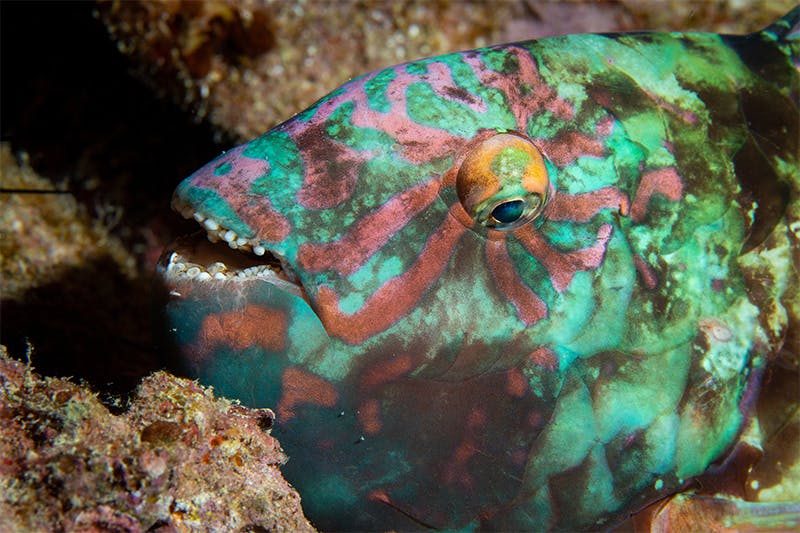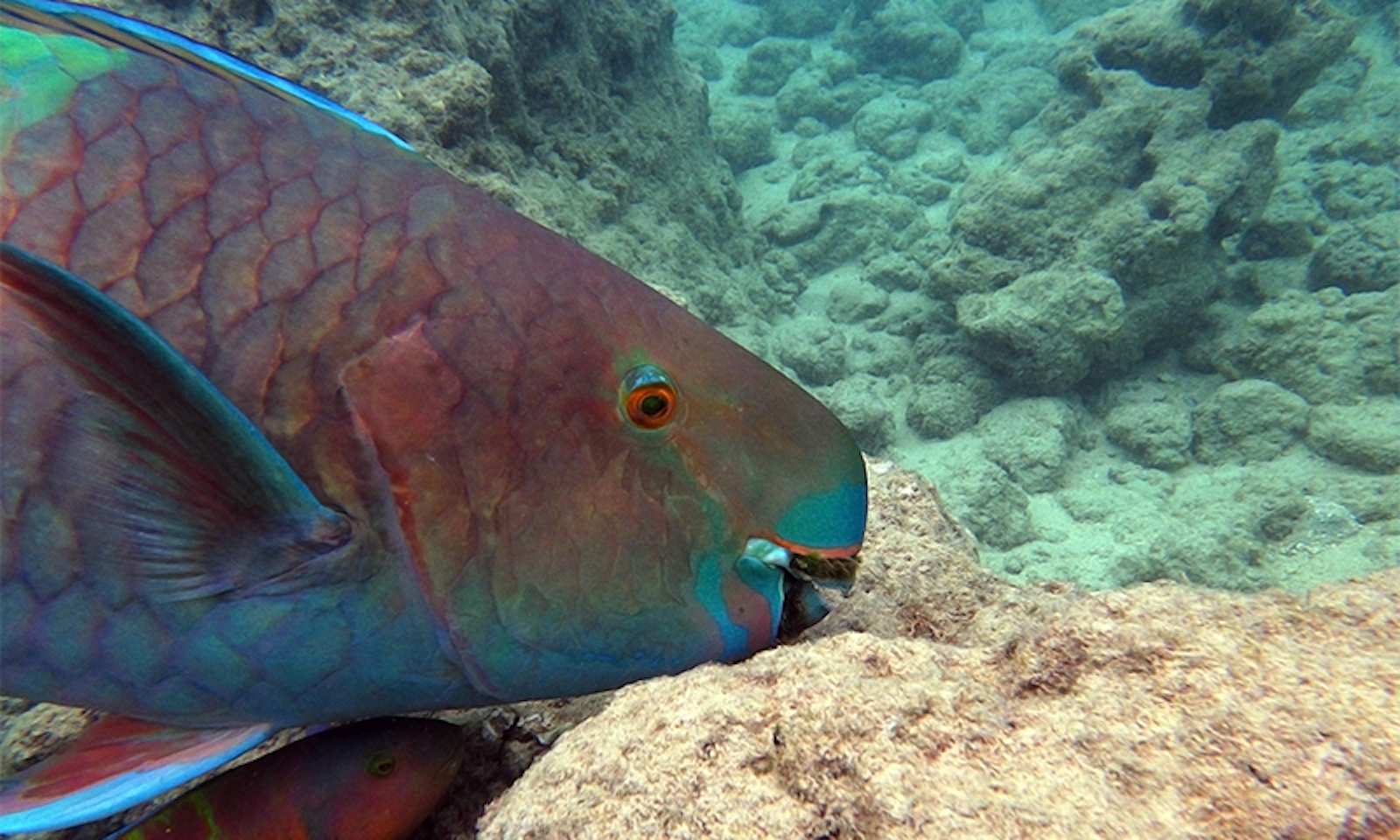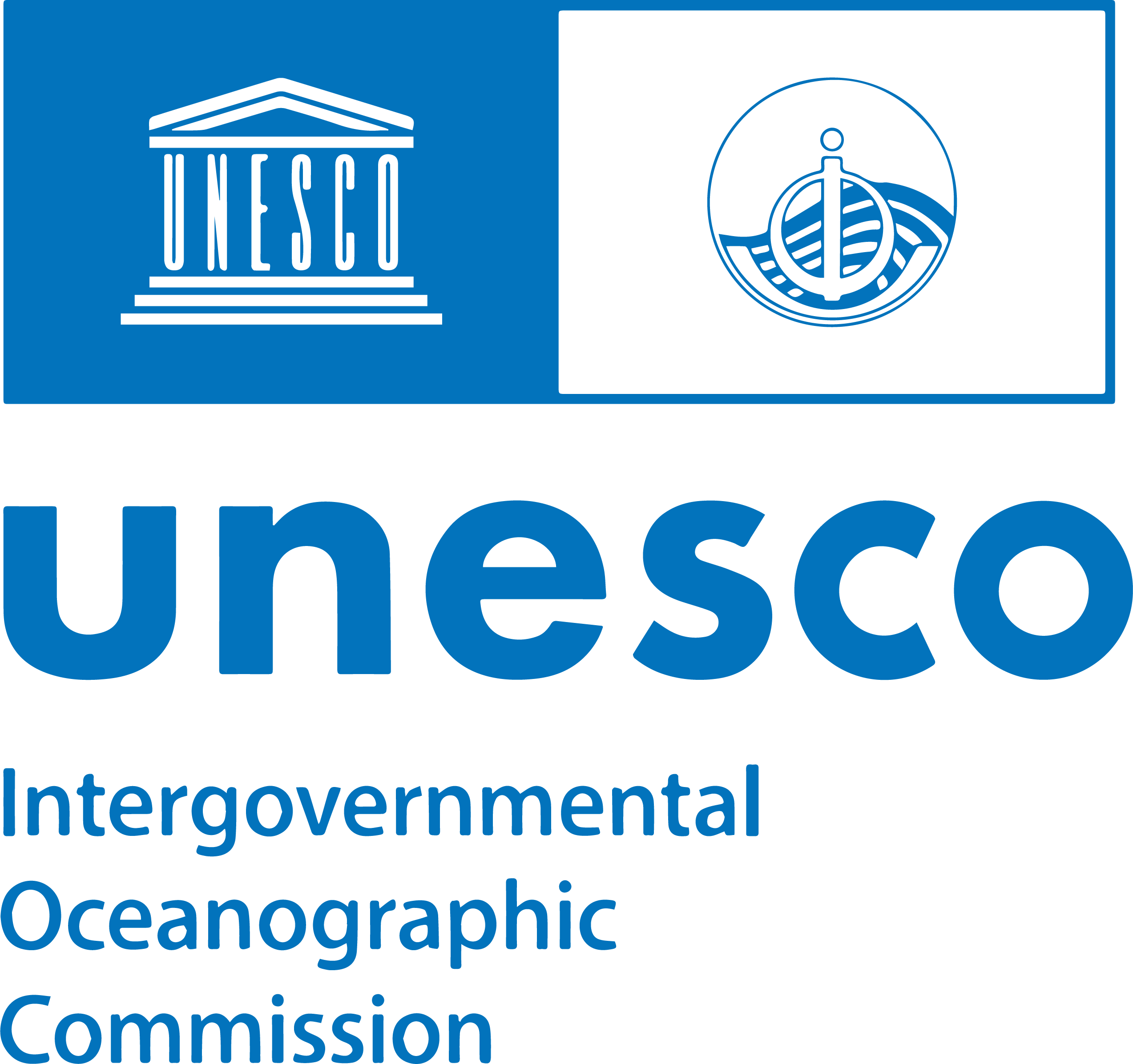The Kumulipo, the Native Hawaiian creation chant, says the world began with a single coral polyp.
This story was recounted to me by Mark Hixon, a reef ecologist at the University of Hawaii, one afternoon on Hanauma Bay, one of Oahu’s most beautiful beaches. Green volcanic peaks curtained the horizon; a near full moon rose to the east. The soft warm sand had been groomed smooth. Hixon wore a navy-blue baseball cap and a University of Hawaii T-shirt; his woolly eyebrows almost perched like caterpillars over his Maui Jim sunglasses. “And I think that’s really cool, because it’s exactly how it begins,” Hixon said of the Hawaiian creation story. “A volcano hits the surface, coral larvae settle, and a reef starts. I love that.”
I did too, since the story sounded familiar. Charles Darwin wasn’t too far behind the Hawaiians in understanding the development of reefs. He intuited that coral atolls, ring-shaped reefs, were the remnants of volcanoes. Corals settle and grow along the shallow basaltic rock of a new volcanic island or seamount. As the island ages, the volcanic rock erodes, and the seamount disappears. Life takes over—a ring of reefs and sand built by corals, sponges, parrotfish, and seabirds. In many places, these atolls are all that remain of long-forgotten volcanic islands.
A green humphead parrotfish can poop 10,000 pounds of sand annually. Hire that fish!
Alfred Russell Wallace described coral reefs as marine-animal forests in 1869. Each polyp, each individual coral, is like an upside-down jellyfish cupped in a limestone skeleton of its own creation. The corals build the seascape themselves. They provide shelter and deliver carbon dioxide to their symbiotic algae, and in return, the zooxanthellae synthesize energy-rich carbohydrates for their hosts.
But corals can’t do it alone. “Herbivores—the fishes that eat seaweeds—are extremely important on coral reefs,” Hixon told me, “because they keep the reef surfaces clean of seaweeds so that corals can grow.” Seaweeds, or macroalgae, grow faster than corals, competing for light, space, and nutrients. In some cases, they will smother corals to death, especially when runoff from land provides them with too many nutrients, like from human feces and agricultural fertilizers. Herbivorous fish are like gardeners, weeding the reef, each using a different technique or preferring a particular type of algae. “You need different garden tools to cut the grass and trim the hedges,” Hixon said. Surgeonfish nibble seaweed off the surface of rocks and corals. “Parrotfish are the heavy lifters of the herbivores. I would call them the lawn mowers of the reef.”
With their fused, beak-like teeth, parrotfish—or uhu, as Hawaiians call them—also scrape and excavate the reef. “The scars they leave behind are where the baby corals grow,” Hixon said. Uhu also release nutrients from dead corals and algae into the water as a coral fertilizer, and in a positive feedback loop, the coral reefs create shelter for the herbivores. “Corals thrive where there are lots of fish,” Hixon said. “The fish feces and urine fertilize the corals, which have single-celled plants living in them. A healthy reef has all these interconnections,” Hixon added. “Thank goodness for uhu.” These fish have another talent that makes them crucial engineers in these ecosystems: They build the beaches that protect the islands, by pooping sand.
If you’re reading this on a tropical beach, consider yourself lucky. Plunge your hand into the rough beach sand, with its colors of oatmeal, cream, sandstone, and slate, that brought you there. You really can see the biosphere in a grain of sand—from the flying fish to the frigate bird, the coconut palm to the elkhorn coral and the parrotfish—on an island beach. Most people don’t realize that when they stretch out by the sea in Hawaii, they’re lying on a bed of animal waste. Biogenic sand, as it’s known, can pass through the gut of a parrotfish or come from ground-up animals—sponge spicules and barnacle fragments—and coralline algae.
I slipped into the waters off Kona on the Big Island of Hawaii to find the sand’s source. The reef showed signs of wear and tear, with lots of dings in the corals from careless snorkelers, but there were large fish, as bright as Broadway, all around. The uhu were hard at work. As I snorkeled along, I heard a hard crunch. Parrotfish can bite through concrete, and as I followed them, it looked like they were kissing the reef, vampires sinking their fangs into stone.

The first uhu I saw was a looker, a spectacled parrotfish in Chihuly blues and greens that seemed to be lit from within. With an overbite of a thousand teeth cemented together in a beak formation, it bit through the coral skeletons like Tootsie Pops. As I snorkeled along, I heard another crunch. Parrotfish can crush calcium carbonate—also known as limestone—and release it through their poop and gill slits as sand and silt.
The parrotfish I was following released a trail of white sand behind its bright orange fins. The poop held together for a moment, almost fabric-like, before settling to the seafloor. Meanwhile, a nearby uhu expelled a loose puff of silt from its gill slits, giving the impression of a strange locomotive. I passed my hand through another parrotfish plume; it dissolved into a thousand grains.
If you follow an animal long enough, it will poop. So I followed another favorite—they’re all my favorites—a star-eyed parrotfish, or pōnuhunuhu in Hawaiian, along the edge of the reef. It was a short wait. This particular male, with pink stars around its eyes and a neon blue body, was eating and pooping almost simultaneously. It’s no surprise. Elsewhere in the Pacific, humphead parrotfish take about three bites of dead corals per minute. They poop about 22 times per hour!
When you spread out on a beach in Hawaii, you’re lying in animal waste.
Parrotfish play a crucial role in coastal ecosystems. Beach-builders, they use their formidable dentition, dental plates derived from fused teeth, to feed on corals, seaweed, rocks, and sand. The algae, along with the bits of rock, coral, and sand they consume, is ground up by small teeth in the throat, known as the pharyngeal mill, making it more digestible. In the process, limestone fragments are turned into sand, and sand into finer sand. Four out of five grains of sand on many tropical beaches are poop from parrotfish meals. By their constant grazing, parrotfish protect the reef, helping to keep corals clear of overgrowth by seaweeds and reducing invasive species. As they scrape, they open new areas for young corals and other bottom-dwellers to settle and grow.
A single green humphead parrotfish, native to the Indian and Pacific Oceans and measuring more than four feet long, can poop almost 10,000 pounds of sand annually. Hire that fish! Three of them can deliver a concrete mixer’s worth of sand to the beach each year. The bigger the chomp, the more living and dead corals they consume, and the more beach sand they excrete.
I looked at the creamy rim of beach along the island’s edge. The parrotfish I was following were smaller than humpheads, but they could still generate up to 1,000 pounds of sand—25 sandbags’ worth—per year. I was watching them slowly building the beach of the Big Island, one poop at a time.
Nick Graham, a British ecologist who studies the impacts of rats and seabirds on island ecosystems, has recently turned his attention to parrotfish. Graham has shown that these herbivores grow larger in the waters around seabird islands. Why? When terns, boobies, noddies, and frigate birds poop, they release nitrogen and phosphorus that is picked up by seaweeds, plankton, corals—and, eventually, fish. Parrotfish grow larger with higher-quality food. Larger fish have bigger bites; grazing rates are three or four times higher on seabird islands. The bigger these beach-builders get, the better they are at reducing seaweed, opening areas for young corals, and pooping vast quantities of beautiful tropical sand.
“These seabirds,” Graham said, “might be able to maintain island growth in the face of sea-level rise.” Maintaining ecological pathways from ridge to reef could be key to saving low-lying atolls in the coming decades. With the help of the birds, parrotfish form a neon firewall against the reef’s demise.
The waters of Kealakekua Bay were clearer, the reef far more colorful than those of Kona. At times, I felt like I was snorkeling through an aquarium. I saw three of the island’s native uhu species: the star-eyed, spectacled, and bullethead parrotfish. I could hear their biting sounds, like hammers crushing rock. Noisy reefs are healthy reefs, ringing with the continuous popping of snapping shrimp, the grunts and howls of fish, and, when you lift your head above the water, the cries of seabirds. The racket indicates a vibrant marine community, helping fish and invertebrates in the open ocean locate living reefs.
There were plenty of other lookers, including the state fish: the humuhumunukunukuapua‘a, or reef triggerfish. The drop-dead-gorgeous orange-spine unicorn fish was also present, as were the reticulated butterfly fish, Moorish idol, and gold-rim surgeonfish.
With the help of seabirds, parrotfish form a firewall against a coral reef’s demise.
It turns out that many of these species play important roles on the reefs. There is evidence that parrotfish, butterfly fish, and other coral-eaters help spread the photosynthetic microbes essential for coral survival. They ingest zooxanthellae, the algal symbionts that grow in the tissues of corals, when they feed. Their fecal matter is loaded with these microscopic algae in densities that are several orders of magnitude higher than in the surrounding seawater. So as the fish move across the reef, they spread the essential symbionts to other corals, a potential benefit to young settling polyps that haven’t received these microbes yet. The zooxanthellae can benefit, too, by being dispersed to new reefs.
There is more to the community than just these showy species. The modest sponge—a sedentary, ancient, and rather simple creature—plays an outsize role in reef productivity. Rob Toonen, a professor at the Hawaii Institute of Marine Biology, later explained it to me: “Why are coral reefs—these incredibly biodiverse and productive systems—found in these incredibly low-nutrient waters?”
“For a long time, people have thought about the corals as the photosynthetic engine of the reefs. But not very much eats coral, and corals don’t produce an awful lot of food,” Toonen said. The missing link was the sponge, often clustered in large gardens. These filter feeders, many with glass skeletons, take organic matter dissolved in the water column and turn it into fecal particles that feed other marine invertebrates, such as amphipods, copepods, and polychaetes, animals that are at the foundation of coral-reef diversity.
“We’re starting to realize that the nutrients on the reefs have very little to do with the corals,” Toonen said, “and an awful lot to do with sponge poop.” Often overlooked, even this simplest, most stationary of organisms can transform the reef. It’s an ancient, silent pump. ![]()
Excerpted from the book Eat, Poop, Die by Joe Roman. Copyright © 2023 by Joe Roman. Reprinted with permission of Little, Brown and Company. All rights reserved.
Lead image: Stuedal / Shutterstock


































